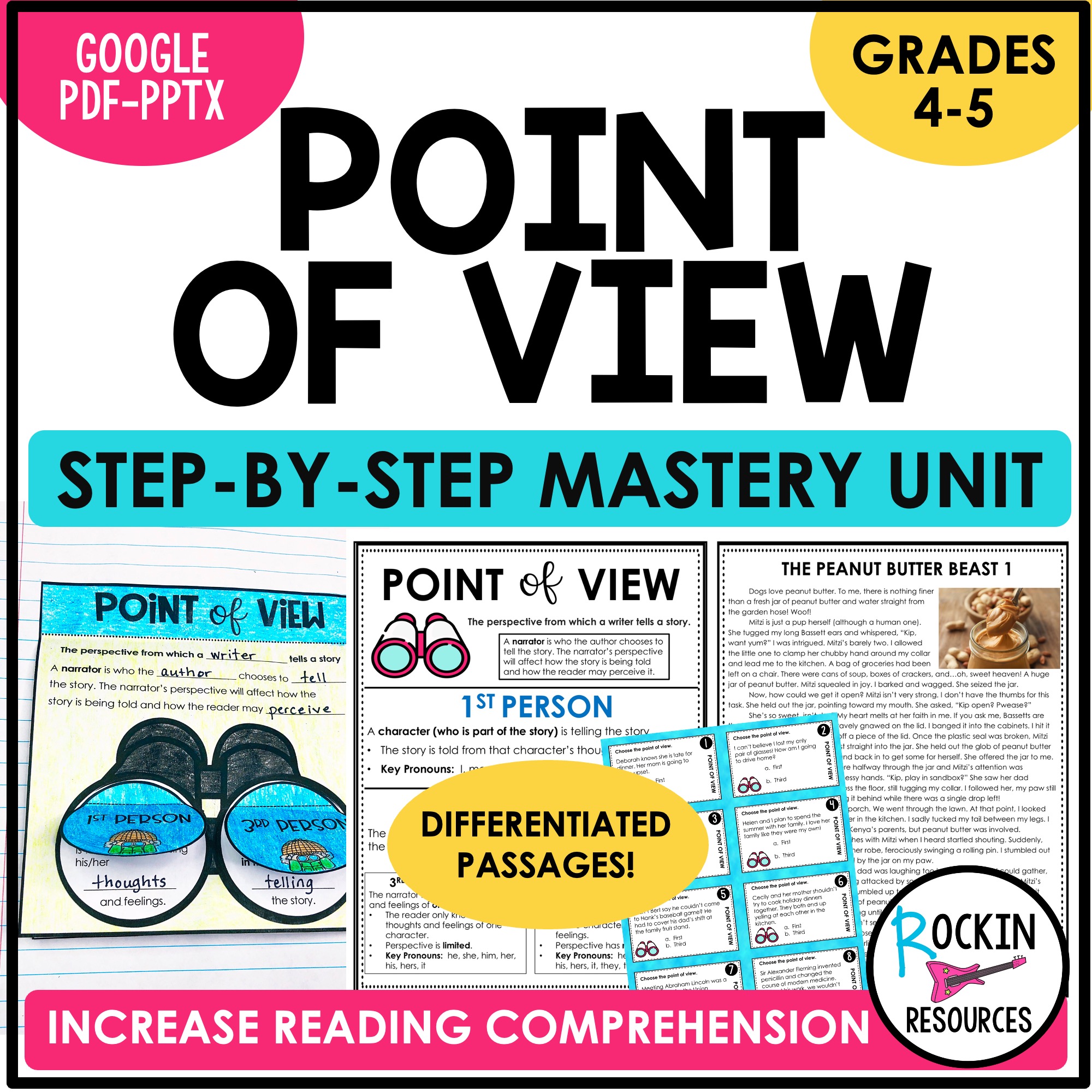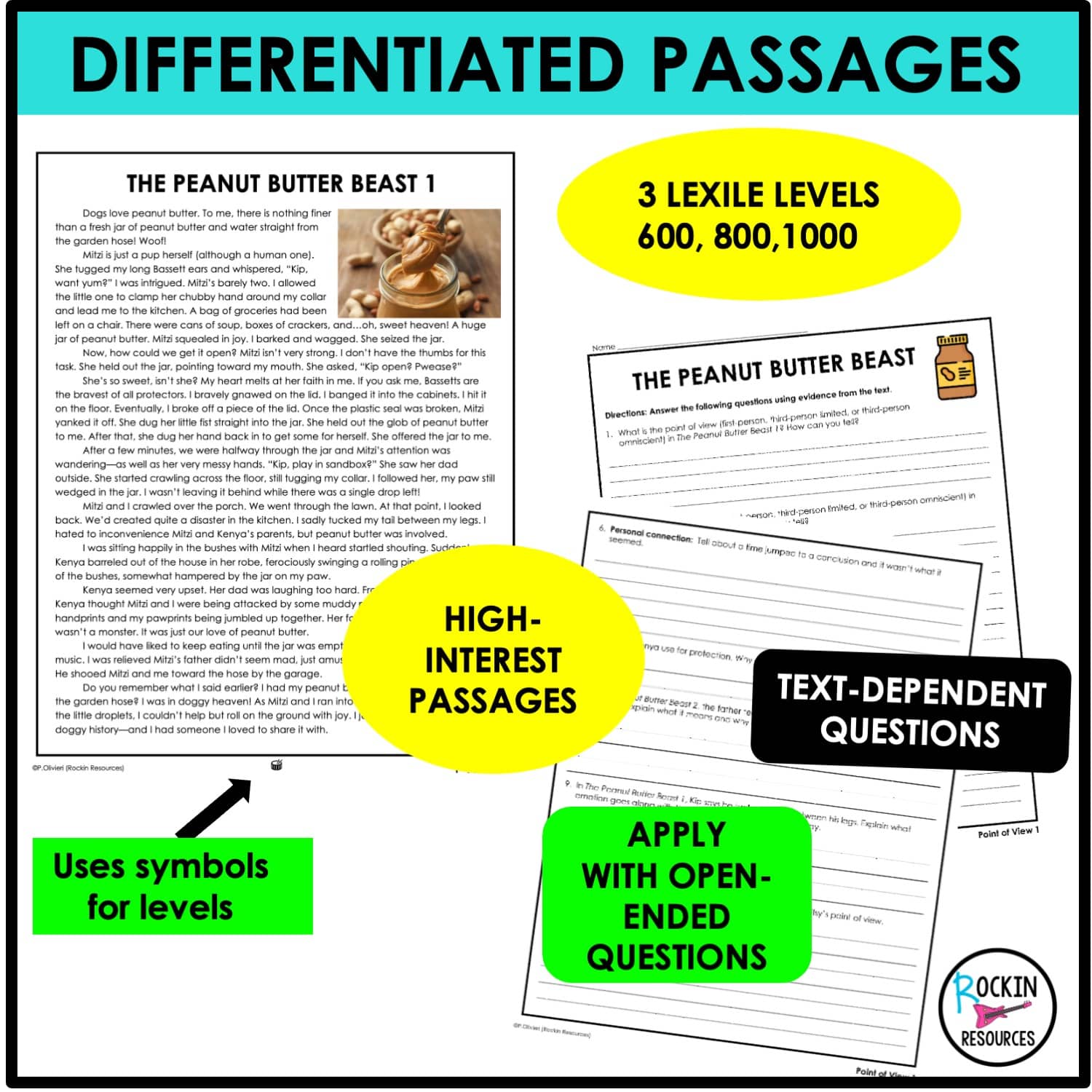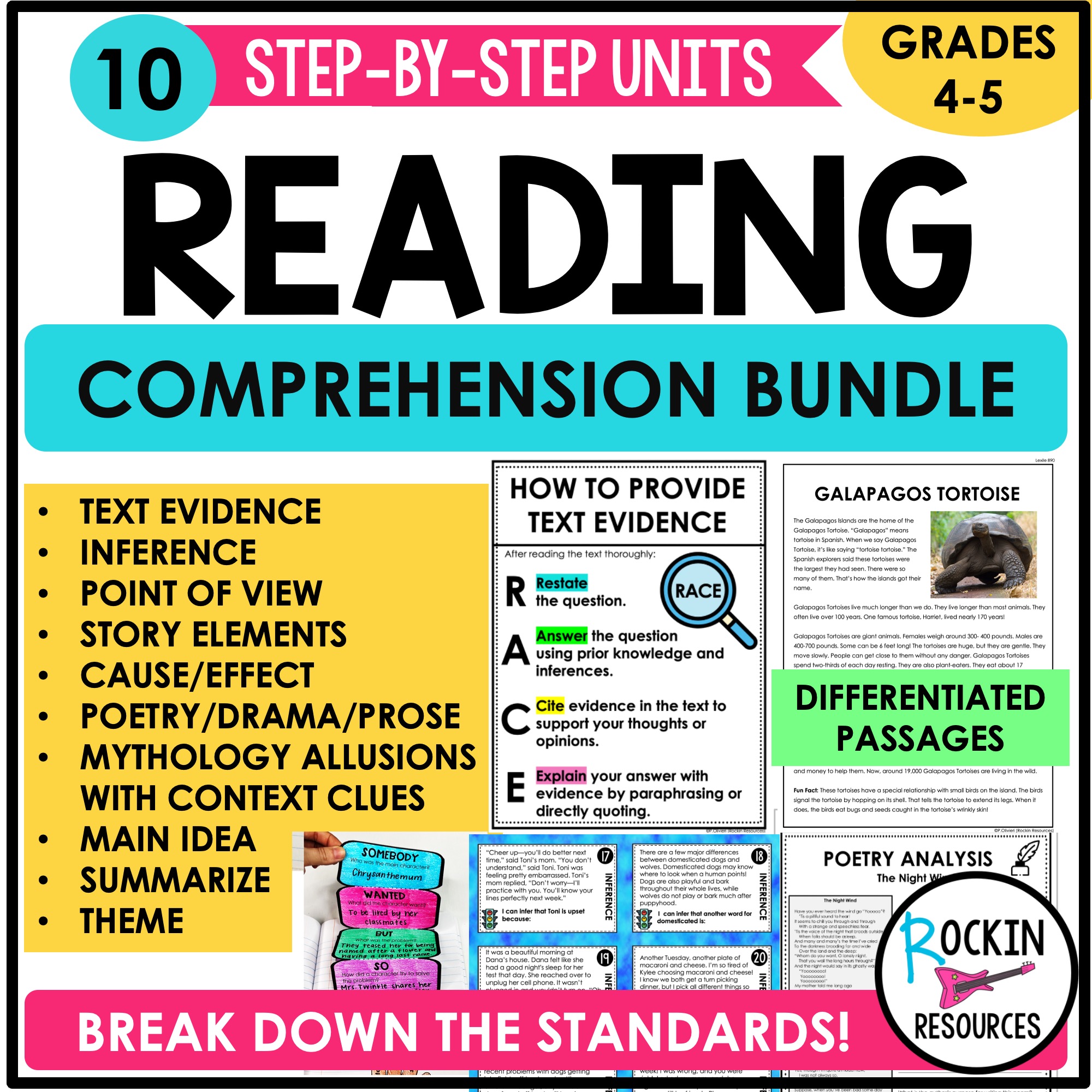What’s Included in This Point of View Unit
1. Scripted Lesson Plans: Step-by-step guidance with pacing, differentiation, and teaching tips.
2. Anchor Charts: Two versions (with or without 3rd-person limited/omniscient) for differentiation.
3. Differentiated Passages and Questions: 4 high-interest reading passages at 3 Lexile levels: 600 (lower level), 800 (mid-level), 1000 (higher level). Some passages are paired for comparison and contrast of perspectives. Use them for whole-group, small-group, and independent work and assessment.
4. Interactive Notes: Engage every learner with note-taking options.
- Pre-written notes
- Fill-in-the-blank sentence frames
- Write-your-own note versions
- Mini anchor charts (perfect for absent students!)
- No cut and paste, easy-to-use format
- Digital fill-in-the-box notes
5. Mentor Texts: Includes an original mentor text and a list of suggested published books, saving you prep time.
6. Point of View Question Stems: Ready-to-use comprehension questions.
7. Warm-Up Activity: Get students up and moving while analyzing perspective.
8. Notice, Think, Wonder Activity: Critical thinking photos to introduce and discuss point of view.
9. Practice Worksheets: Three pages to identify and apply point of view.
10. Task Cards: 24 engaging, step-by-step task cards
11. Writing Prompts: 16 short prompts for writing with a point of view. These are perfect for morning work, centers, or homework.
12. Book Response Pages: 8 varieties of graphic organizers to use with any book.
13. Tracking Form – Record student progress and plan small group instruction.
14. Digital Version- PowerPoint & Google Slides versions included for everything except task cards (which are in Google Forms for easy grading). All Google links and answer keys are conveniently located in the Teacher Printable PDF.
15. Answer Keys
Why You’ll Love It
This unit takes the guesswork out of teaching point of view! It’s scaffolded for success, aligned to standards, and designed for engagement, giving your students the tools they need to identify, compare, and apply different perspectives across texts. And yes, it is classroom tested!
👉 SEE THE PREVIEW for digital examples and a closer look at everything included!
Thank you for visiting my store!
Pam
COMMON CORE STANDARDS:
RL.4.6: Compare and contrast the point of view from which different stories are narrated, including the difference between first- and third-person narrations.








